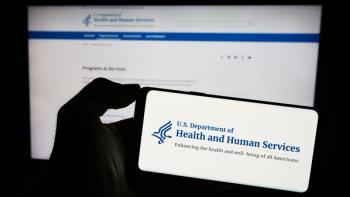
A substantial tax bill for substantial services
It may be only a matter of several hundred dollars each year, but over the course of a career, it can add up.
Editor's Note: The case discussed here is Veterinary Surgical Consultants, P.C. v. Commissioner of Internal Revenue, Docket No. 2500-99, 117 T.C. No. 14, 10/15/01.
It may be only a matter of several hundred dollars each year, but over the course of a career, it can add up.
We're talking about the employment taxes that must be paid on "wages"paid to the principal of a veterinary practice.
Recently, the U.S. Tax Court agreed with the IRS' determination thatan S corporation officer who performs "substantial services" forthe corporation and who received remuneration from them, is an employeewhose wages are subject to federal employment taxes. This, despite the factthat an S corporation is supposed to be a pass-through entity for a veterinarypractice entity.
The income and deductions of the S corporation are carried over to theshareholder's personal return where any resulting profits are taxed at theveterinarian's personal tax rate.
On-going controversy
In this situation, a veterinarian who we'll call Dr. John Doe, also becameembroiled in the on-going controversy of just who is and who isn't an independentcontractor for employment tax purposes. The fact that our John Doe was thesole shareholder, president and officer of Veterinary Surgical Consultants(VSC), an S corporation, proved of little consequence to either the IRSor the tax court.
According to court documents, VSC's only business is providing consultingand surgical services to veterinarians.
In fact, since VSC's incorporation, all of its income has been generatedfrom the consulting and surgical services provided by John Doe to VeterinaryOrthopedic Services, Ltd. (Orthopedic). According to the record, Dr. Doespent at least 33 hours per week providing consulting and surgical serviceson behalf of VSC.
Dr. Doe was the only person with signature authority on VSC's bank account.What's more, Dr. Doe handled all of VSC's correspondence and performed alladministrative tasks on behalf of VSC. VSC, for its part, did not make regularpayments to Dr. Doe; rather, Dr. Doe would withdraw money from VSC's bankaccount at his discretion.
The paperwork
BSC received a Form 1099-MISC, Miscellaneous Income, from Orthopedicreporting "non-employee compensation."
The Form 1099 MISC reported that Orthopedic paid VSC $125,152.63 in 1994,$225,469.24 in 1995 and $212,863 in 1996. VSC duly reported the amountsreflected on the Form 1099 MISC as its total gross receipts on its Form1120S, U.S. Income Tax Return for an S corporation for 1994, 1995 and 1996.
So far, so good-maybe. On the Form 1120S, VSC reported net income fromits trade or business for 1994, 1995 and 1996 in the respective amountsof $83,995.50, $179,030.99 and $161,483.35. VSC paid those amounts to Dr.Doe and reported these amounts as Dr. Doe's share of its income on ScheduleK-1, Shareholders' Share of Income, Credits, Deductions, etc. of Form 1120S.
VSC completed Schedule m-2, Analysis of Accumulated Adjustments Account,Other Adjustments Account and Shareholders' Undistributed Taxable IncomePreviously Taxed, on Form 1120S reporting that the amounts that it paidto Dr. Doe were distributions other than distributions paid from accumulatedearnings and profits.
But ..
Unfortunately, VSC did not issue either a Form 1099-MISC or a Form W-2,Wage Tax Statement, to Dr. Doe for 1994, 1995 or 1996. Nor did VSC filea Form 941, Employer's Quarterly Tax Return, for any quarter during thatperiod.
Dr. Doe, on Schedule E, Supplemental Income and Loss of his 1994, 1995and 1996 Forms 1040, reported his share of VSC's income (as reported onSchedule K-1) as non-passive income from an S corporation.
A 1997 audit of SC's 1995 tax return raided the question of whether Dr.Doe was an employee of VSC or not. Naturally, Dr. Doe vehemently protestedany assessment of employment taxes against VSC.
The result was a Notice of Determination, in which the IRS decided that1.) Dr. Doe was an employee of VSC for federal employment tax purposes and2.) he was not entitled to "safe harbor" relief from those taxesunder Section 530 of the tax law. Dr. Doe petitioned the U.S. Tax Courtseeking a review of that Notice of Determination.
An employee: to be or not to be
Our tax rules impose FICA (Social Security) and FUTA (unemployment) taxeson employers for wages paid to their employees. Under those rules, an employeeis defined, in part, as any officer of a corporation. There is, of course,an exception to the label of "employee" for any officer who doesnot perform services (or performs only minimal services) and who neitherreceives nor is entitled to receive remuneration.
The form of payment is immaterial, the only relevant factor being whetherthe payments were actually received as compensation for employment.
Consequently, an officer who performs substantial services for a corporationand who receives remuneration in any form for those services is consideredto be an employee, whose wages are subject to federal employment taxes.
Here, VSC contends that the amounts paid to Dr. Doe were distributionsof its corporate net income, rather than wages. Unfortunately, the rulesonly permit use of S corporation pass-through items in calculating tax liabilityfor income tax purposes-not tax liability under the federal employment taxprovisions of FICA and FUTA.
Admittedly, Dr. Doe performed substantial services on behalf of VSC.The characterization of the payments to Dr. Doe as a distribution of VSC'snet income is, according to the tax court, merely a subterfuge for reality;the payment constituted remuneration for services performed by Dr. Doe onbehalf of VSC.
An employer cannot avoid federal employment taxes by characterizing compensationpaid to its sole director and shareholder as distributions of the corporation'snet income, rather than as wages. Regardless of how an employer choosesto characterize payments made to its employees, the true analysis, accordingto the courts, has been whether the payments represent remuneration forservices rendered.
A safe harbor
Despite the Tax Court's determination that our John Doe was an employeeof VSC and that the payments to him from VSC were wages subject to federalemployment taxes, Section 530 of the tax law allows VSC relief from employmenttax liability if two conditions are satisfied. Specifically:
"(A) for purposes of employment taxes, the taxpayer did not treatan individual as an employee for any period, and (B) in the case of periodsafter December 31, 1978, all federal tax returns (including informationreturns) required to be filed by the taxpayer with respect to such periodare filed on a basis consistent with the taxpayer's treatment of such individualsas not being an employeethen for purposes of applying such taxes for suchperiod with respect to the taxpayer, the individual shall be deemed notto be an employee unless the taxpayer had no reasonable basis for not treatingsuch individual as an employee."
Obviously, the second condition (B) is not satisfied because VSC hadno reasonable basis for not treating Dr. Doe as an employee nor did it fileany tax returns, informational or not.
To the contrary
VSC also attempted to rely on a 1959 ruling by the IRS involving a smallbusiness corporation electing not to be subject to federal income taxesunder the Subchapter S rules. Under that ruling, it was decided that theS corporation distributions required to be included in each shareholder'sgross income did not constitute "net earnings from self-employment"for purposes of the Self-Employment Contributions Act.
Unfortunately, as the tax court pointed out, this ruling deals solelywith whether amounts that a shareholder receives are derived from a tradeor business carried on by the shareholder. In this instance, the issue iswhether an officer is an employee of the corporation. The 1959 ruling makesno mention of either corporate officers or their federal employment taxstatus. In other words, the ruling does not provide a reasonable basis fortreating Dr. Doe other than as an employee, at least according to the taxcourt.
Final tax bill
Tax Court Judge Julian Jacobs, agreeing with the IRS' earlier Letterof Determination, ruled that Dr. Doe was VSC's employee for federal employmenttax purposes. The court explained that he was an officer who performed substantialservices for VSC for which he received remuneration.
The court rejected VSC's characterization of its payments to Dr. Doeas a distribution of VSC's net income. The court concluded that the paymentswere clearly remuneration for service, as Dr. Doe was VSC's sole sourceof income. Thus, the payments were wages subject to federal employment taxes.
The court also rejected VSC's claim that it should be entitled to safeharbor relief under the tax law because VSC had no reasonable basis fornot treating him as an employee. The court rejected each of VSC's argumentsfor meeting the safe haven requirements.
Mr. Battersby is a financial consultant in Ardmore,Pa.
Newsletter
From exam room tips to practice management insights, get trusted veterinary news delivered straight to your inbox—subscribe to dvm360.






